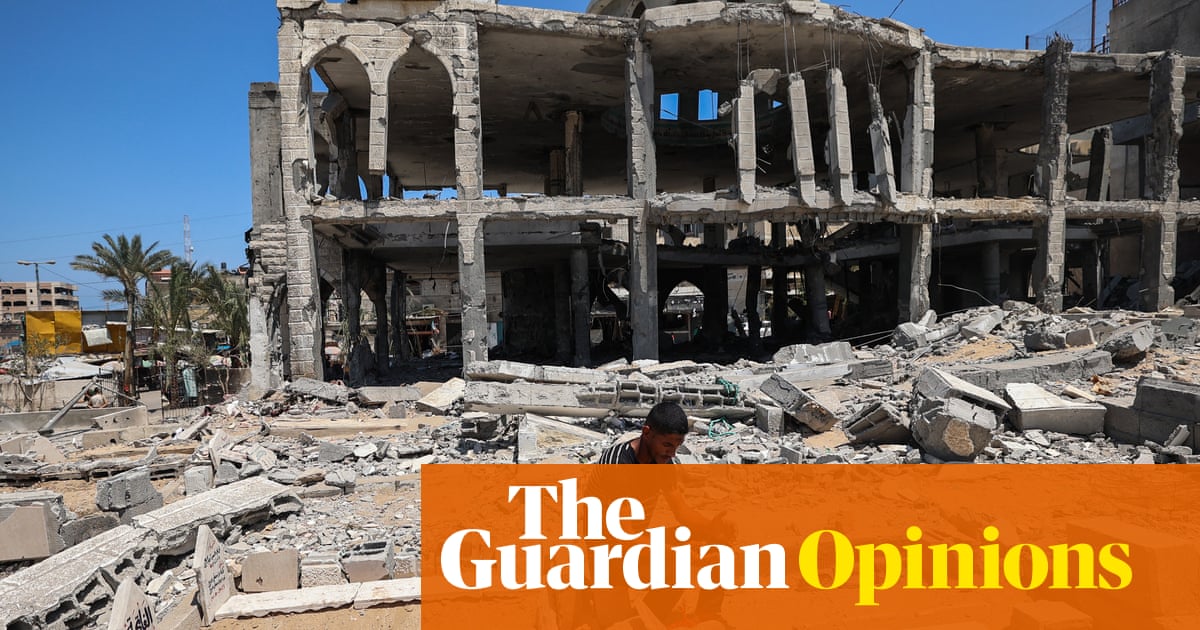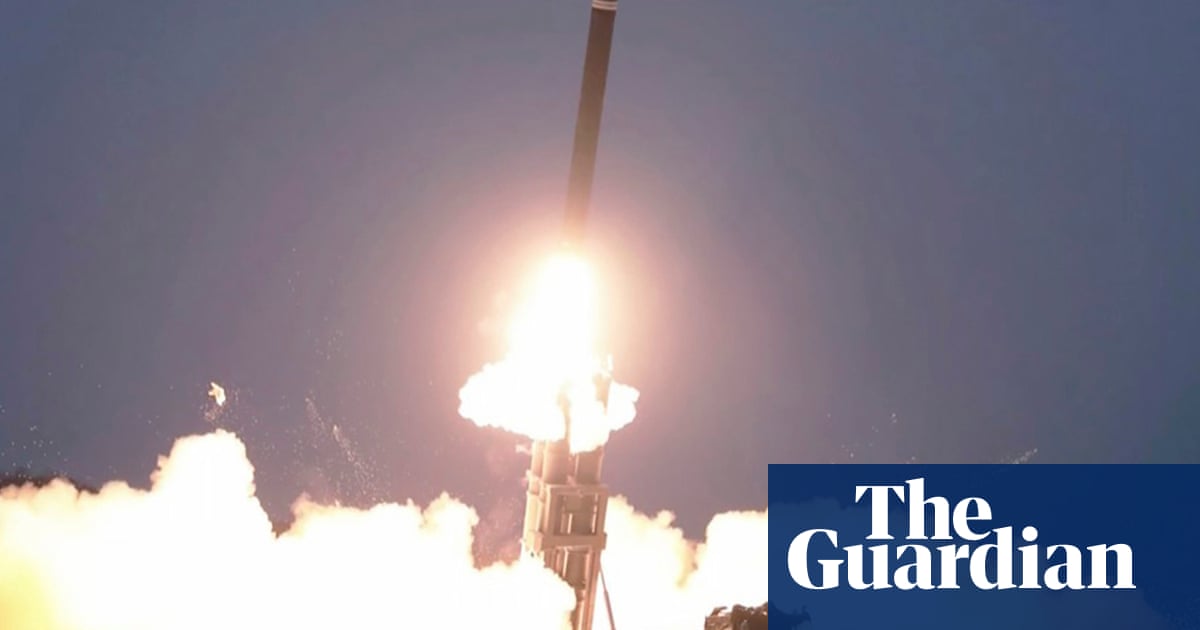Earlier this summer, amid renewed tensions between India and Pakistan following a terrorist attack in Indian-administered Kashmir, Donald Trump remarked that the two countries had been fighting over Kashmir for “a thousand years”. It was a glib, ahistorical comment, and was widely ridiculed. Shattered Lands, Sam Dalrymple’s urgent and ambitious debut, offers a more comprehensive rebuttal. Far from being a region riven by ancient hatreds, the lands that comprise modern India, Pakistan, Bangladesh and Myanmar – as well as parts of the Gulf – were divided up within living memory from an empire in retreat.
“You can’t actually see the Great Wall of China from space,” Dalrymple begins, “but the border wall dividing India from Pakistan is unmistakable.” Stretching more than 3,000km and flanked by floodlights, thermal vision sensors and landmines, this is more a physical scar left by the hurried dismantling of British India than a traditional geopolitical divide. What might now seem like natural frontiers were shaped by five key events: Burma’s exit from the empire in 1937; the separation of Aden that same year, and of the Gulf protectorates in 1947; the division of India and Pakistan, also in 1947; the absorption of more than 550 princely states; and, in 1971, the secession of East Pakistan. Neither ancient nor inevitable, these lines were hastily drawn in committee rooms, colonial offices and war cabinets.
What makes Shattered Lands remarkable is not just the breadth of its archival reach or the linguistic range of its interviews (from Bengali to Burmese, Urdu to Konyak), but the way it reframes south Asia’s history through the lens of disintegration.
The son of acclaimed historian William Dalrymple, Sam nevertheless writes with a distinct sensibility. His work is shaped by a generational awareness of fractured identities, contested borders and the violence of nation-making. Where the elder Dalrymple has often chronicled the grandeur and decline of empires, the younger is more interested in how they splinter.
And so, rather than treat the 1947 Partition as the singular rupture, Shattered Lands shows it to be one of many. The imperial map frayed gradually, and each unravelling left its own legacy of dispossession, nationalism and insurgency.
Take Burma (now Mynamar), whose reconstitution as a crown colony in 1937 represented the first major partition of the Raj. Dismissed by many Indian elites as peripheral, Burma’s separation was both strategic and symbolic. Gandhi, often invoked as a unifier, was among its supporters. “I have no doubt in my mind that Burma cannot form part of India under swaraj [self rule],” he once wrote, aligning with the view of many Indian leaders who viewed India as Bharat, the sacred geography referred to in the epic Mahabharata, which excluded Burma and Arabia. Speaking to Rangoon’s Gujarati community, Gandhi told them they were “guests in a foreign country” despite many Burmese seeing themselves as Indian.
That same year, as Burma and Aden were severed from the Indian Empire, the Congress party adopted Vande Mataram as India’s national song. In equating the nation with the Hindu goddess Durga, it alienated Muslims such as Muhammad Ali Jinnah, who increasingly saw Congress as a vehicle for Hindu majoritarianism. The ideological groundwork for the creation of Pakistan was already being laid.
Among the most poignant moments in the book is a brief account of a Bible salesman from the Naga hills who volunteers to fight in the second world war. The Nagas are ethnically Tibeto-Burman peoples native to the borderlands of north-east India and north-west Myanmar, with distinct cultural traditions and a strong sense of nationhood that long predates these modern states. When asked if he is Indian or Burmese, the man replies, “I am a Naga first, a Naga second, and a Naga last.” The British system, designed to sort subjects into clear administrative categories, had no space for an affiliation that transcended colonial borders, and he was turned away.
If there’s a critique to be made, it’s that Dalrymple’s account remains largely anchored to the great men of history: viceroys, premiers, politicians, princely elites. While there are flickers of grassroots perspective – such as the Naga would-be soldier and Rohingya families from the borderlands – they often play a supporting role in a narrative shaped by those drawing the maps. Yet perhaps that is the point: these were top-down decisions, made in grand offices, whose human cost has still not fully been reckoned with.
More significantly, Shattered Lands speaks powerfully to our present moment. At a time of widespread historical amnesia – when revisionist governments across south Asia are remaking textbooks and erasing inconvenient truths – this book reminds us how recent, contested and fragile these dividing lines are.
The prose is vivid, the storytelling cinematic, and Dalrymple draws together forgotten archives from Aden to Assam. Above all, there is a refusal to mythologise, and instead a clear-eyed history that lays bare the possibilities foreclosed by the region’s fragmentation.

 2 months ago
85
2 months ago
85

















































